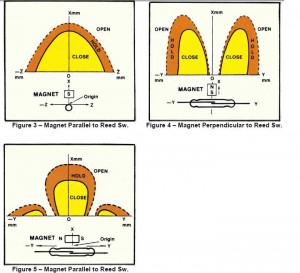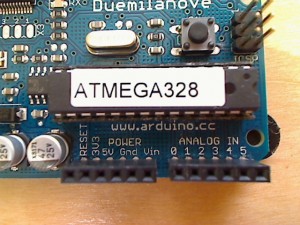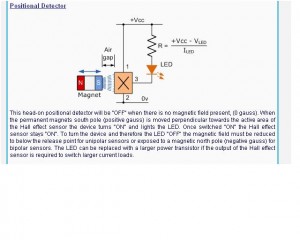
Monday, June 28, 2010
Magnetic reed switches
Using magnetic reed switches may be the answer to my underwater switch issues. But how do they work? and where are the fields?

Saturday, June 26, 2010
Monitor voltage of battery
Want to monitor the voltage of the battery attached to the arduino, then head over to Trossen and use a voltage divider circuit and read on the arduino
The secret voltage and secret temperature of the arduino is from tinkerit

The secret voltage and secret temperature of the arduino is from tinkerit

Monday, June 14, 2010
inLine bilge pump
Rule make an inline bilge pump: iL200PLUS In-Line & Submersible Pump 12V - the continuous version, can remove net and add a hose. $30 from Amazon


| Specifications: | |||||||||||||||||||||||||||||||||||||||||||||||||||||||||||||||||||||||||||||||||||||||||||||||||||
| Output | up to 12.7 litres/minute at up to .75bar (2.8 gallons/minute at 11psi) | ||||||||||||||||||||||||||||||||||||||||||||||||||||||||||||||||||||||||||||||||||||||||||||||||||
| Connections | 1/2" (12.7mm) Hose | ||||||||||||||||||||||||||||||||||||||||||||||||||||||||||||||||||||||||||||||||||||||||||||||||||
| Dimensions (L x H) | 142 x 38 mm | ||||||||||||||||||||||||||||||||||||||||||||||||||||||||||||||||||||||||||||||||||||||||||||||||||
| Max. Current | 2.5 A | ||||||||||||||||||||||||||||||||||||||||||||||||||||||||||||||||||||||||||||||||||||||||||||||||||
| Weight | 260 g | ||||||||||||||||||||||||||||||||||||||||||||||||||||||||||||||||||||||||||||||||||||||||||||||||||
Acrylic domes
There are clear acrylic domes (12" diameter with flange) from calplastics for $55
Thursday, June 10, 2010
Thursday, June 3, 2010
ADC for arduino
From adafruit blog: The analogRead(BANDGAPREF) trick has a lot of problems. I tried it for several applications and found it to be a pain and not very accurate. Here are a few of the things I ran into.
You need to calibrate each Arduino since the bandgap is only specified to be between 1.0 and 1.2 volts on the 168/328. It was only intended for brownout detection. It varies by about 5% on boards I tested which is better than the spec but there is no guarantee.
The value returned when you read it is around 220 so a two bit error results in a 1% error in the value of Vref. When you add zero offset errors in the Arduino ADC and bandgap noise and calibration problems you will likely have fluctuations of 2-3% in your readings.
Putting a cap on the Vref pin helps Vref noise some.
You will likely see the measured level in you tank fluctuate by 2-3% which is not what people expect.
To measure 4-20 ma I use a 100 ohm 0.05% resistor $4.83
http://search.digikey.com/scripts/DkSearch/dksus.dll?Detail&name=MR106-100-.05-ND
and a MCP3422 with an internal 0.05% reference $3.14
http://search.digikey.com/scripts/DkSearch/dksus.dll?Detail&name=MCP3422A0-E/SN-ND
This is all you need to get 0.1 - 0.2 % with no calibration and interchangeable parts.
The beauty of the MCP3422 is that it is a total sigma-delta system with amp, reference, filters, and oscillator so see the adafruit blog post about this useful chip
You just need to make a current vs volume table.
a 12-bit external ADC could be helpful ($28) and also a great thread on noisy numbers on adafruit
You need to calibrate each Arduino since the bandgap is only specified to be between 1.0 and 1.2 volts on the 168/328. It was only intended for brownout detection. It varies by about 5% on boards I tested which is better than the spec but there is no guarantee.
The value returned when you read it is around 220 so a two bit error results in a 1% error in the value of Vref. When you add zero offset errors in the Arduino ADC and bandgap noise and calibration problems you will likely have fluctuations of 2-3% in your readings.
Putting a cap on the Vref pin helps Vref noise some.
You will likely see the measured level in you tank fluctuate by 2-3% which is not what people expect.
To measure 4-20 ma I use a 100 ohm 0.05% resistor $4.83
http://search.digikey.com/scripts/DkSearch/dksus.dll?Detail&name=MR106-100-.05-ND
and a MCP3422 with an internal 0.05% reference $3.14
http://search.digikey.com/scripts/DkSearch/dksus.dll?Detail&name=MCP3422A0-E/SN-ND
This is all you need to get 0.1 - 0.2 % with no calibration and interchangeable parts.
The beauty of the MCP3422 is that it is a total sigma-delta system with amp, reference, filters, and oscillator so see the adafruit blog post about this useful chip
You just need to make a current vs volume table.
a 12-bit external ADC could be helpful ($28) and also a great thread on noisy numbers on adafruit
Depth measurement in seawater
The Cornell sub group shows a depth sensor board provides real-time information about the craft's depth below the surface of the pool. Analog pressure data (up to 100 PSI, or approximately 55 meters below the surface) is obtained from an MSI UltraStable-300 pressure transducer, operating in a 4-20 mA current loop. A 24-bit AD7791 Sigma-Delta Analog to Digital Converter is used to capture pressure data, which is converted into a depth reading by an on-board microcontroller and reported over RS232. $100 from digi-key. Also a microstrain meter to show position
Also see http://www.paroscientific.com/depthsensors.htm for other depth sensors
and Woods Hole Deep Submergence Lab
Also see http://www.paroscientific.com/depthsensors.htm for other depth sensors
and Woods Hole Deep Submergence Lab
Subscribe to:
Posts (Atom)


